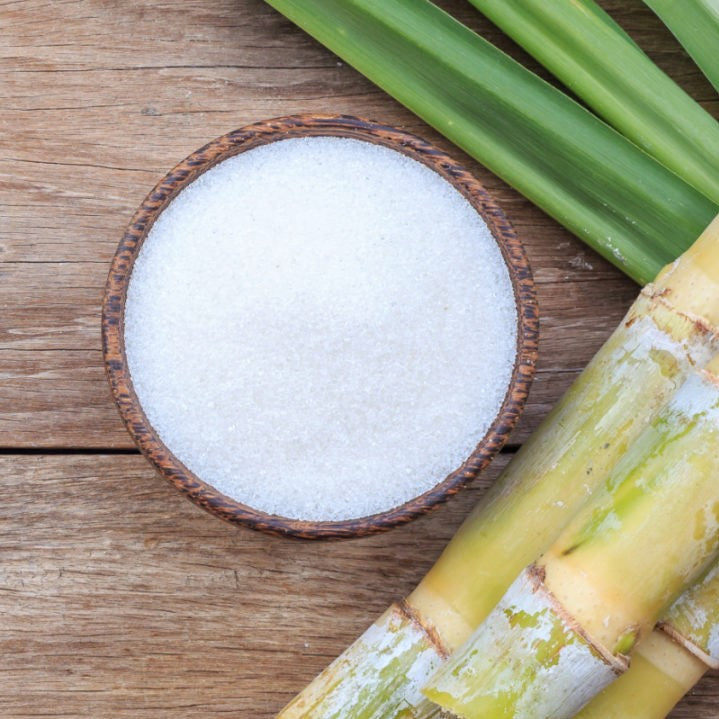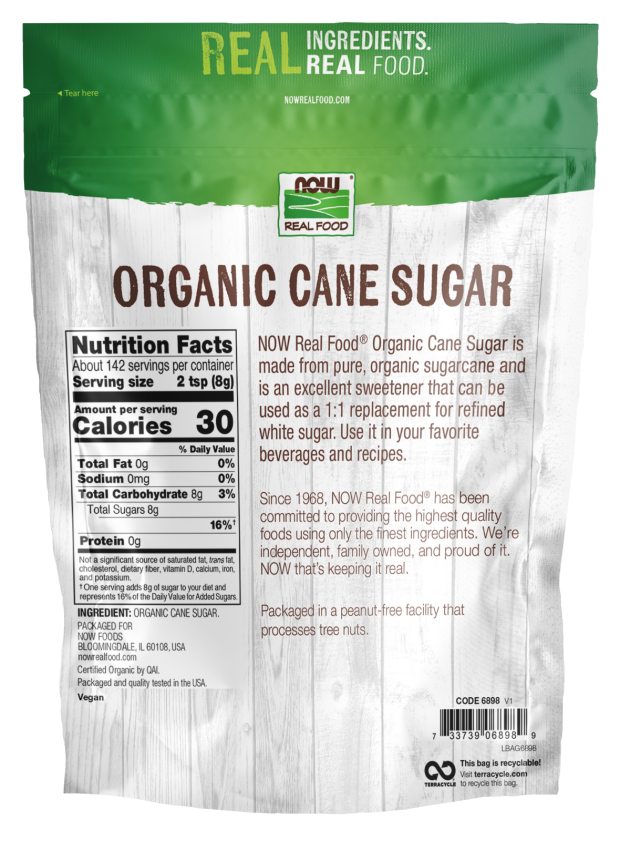The Trip of Cane Sugar Processing: From Harvest to Crystals
The Trip of Cane Sugar Processing: From Harvest to Crystals
Blog Article
An Extensive Overview to the Ecological Influence and Sustainability Practices in Walking Cane Sugar Processing
The environmental impact of walking cane sugar processing offers an intricate range of difficulties that warrant cautious assessment. From soil degradation and excessive water usage to the carbon footprint associated with growing and production, the repercussions of typical practices are far-reaching. What particular techniques can be carried out to strike a balance in between efficiency and ecological stewardship?
Summary of Cane Sugar Processing
Walking cane sugar handling includes a collection of organized steps that transform sugarcane right into polished sugar. Originally, gathered sugarcane is transferred to processing facilities, where it undergoes cleansing to remove dirt and debris. Following this, the walking stick is squashed to extract juice, which is then cleared up by removing contaminations via home heating and the addition of lime.
The clarified juice undertakes evaporation, where water is gotten rid of to concentrate the sugar material. This concentrated syrup is after that taken shape with air conditioning, permitting sugar crystals to develop. These crystals are separated from the remaining syrup utilizing centrifugation, causing raw sugar. To achieve polished sugar, the raw product goes through additional purification procedures, which may consist of filtering and washing to remove continuing to be contaminations and shade.
The final product is after that dried out and packaged for distribution. Throughout this entire procedure, maintaining effectiveness and quality assurance is important to make certain the sugar satisfies industry criteria. Each action in walking stick sugar handling not just adds to the end product yet likewise has ramifications for resource usage and waste generation, setting the phase for conversations on sustainability and ecological influences related to sugar manufacturing.
Ecological Obstacles of Manufacturing
The manufacturing of cane sugar presents several considerable ecological obstacles that warrant interest. One key problem is the substantial use of agrochemicals, including fertilizers and pesticides, which can result in soil destruction, biodiversity loss, and contamination of local water sources. The runoff from sugarcane fields usually brings these chemicals right into close-by ecological communities, interfering with marine life and affecting the wellness of areas reliant on these water bodies.
Another challenge is the high energy usage connected with sugarcane handling. The boiling and refining stages require significant warm, primarily produced by burning nonrenewable fuel sources, contributing to greenhouse gas emissions. Additionally, the large land location required for sugarcane farming can cause logging and environment damage, further worsening climate modification and harmful wildlife.
Moreover, the labor techniques in some regions raise ethical issues, as workers may face inadequate working conditions and poor salaries. This circumstance typically continues a cycle of poverty in neighborhood neighborhoods. Cane Sugar Processing. Resolving these environmental obstacles is important for creating more sustainable techniques in cane sugar production, eventually profiting both the environment and the communities associated with this sector
Water and Land Usage Impact
Water resources and land use are essential parts in the walking cane sugar sector that significantly impact the setting. The cultivation of sugarcane requires considerable water input, with estimates suggesting that it can eat as much as 2,000 liters of water per kilo of sugar generated. This extensive use water typically causes exhaustion of regional water resources, affecting not only the sugarcane vineyards yet also bordering ecosystems and areas that count on the very same water sources for farming and residential usage.

Moreover, land use for sugarcane farming can cause logging and the conversion of all-natural habitats into monoculture vineyards. This practice decreases biodiversity, disrupts local communities, and adds to soil deterioration. The growth of sugarcane fields usually intrudes on valuable farming land, producing competitors for resources between food and biofuel manufacturing.
Sustainable methods, such as optimizing watering strategies and carrying out crop turning, are essential to reduce these impacts. By adopting a lot more effective water use and land monitoring methods, the walking cane sugar industry can minimize its environmental footprint, making certain a balance between farming productivity and environmental preservation.
Greenhouse Gas Emissions
Greenhouse gas exhausts represent a considerable ecological concern within the walking stick sugar processing sector, especially as agricultural methods broaden to meet worldwide demand. The farming of sugarcane, a plant that flourishes in exotic climates, depends greatly on artificial fertilizers and chemicals, which add to laughing gas discharges. Additionally, land-use changes, consisting of deforestation for new sugarcane vineyards, release co2 kept in plant life and dirt.
During processing, energy usage is another major resource of greenhouse gas emissions - Cane Sugar Processing. Many sugar mills make use of nonrenewable fuel sources to power equipment and create heat, resulting in substantial carbon impacts. Furthermore, the transportation of raw sugarcane and completed items includes layers of exhausts via fuel burning in automobiles
This entails assessing present farming practices, processing approaches, and transportation systems to determine locations for improvement and reduction. Resolving greenhouse gas emissions is crucial for fostering a more lasting walking stick sugar sector in an altering climate.

Lasting Practices and Innovations
Lasting methods and technologies are increasingly essential in the walking stick sugar processing market as stakeholders seek to click this minimize ecological effects while keeping performance. One significant innovation is the implementation of integrated crop administration, which maximizes source usage by incorporating dirt administration, parasite control, and crop rotation methods. This strategy enhances return while lessening chemical inputs and protecting soil health.
In addition, the adoption of eco-friendly energy sources, such as biomass from sugarcane deposits, has acquired grip - Cane Sugar Processing. By transforming waste items right into power, processing centers can decrease their reliance on nonrenewable fuel sources, thus lowering greenhouse gas emissions
Water administration practices have additionally seen improvements through the recycling and reusing of water in handling plants, substantially lowering freshwater usage. Developments in technology, such as accuracy agriculture, enable farmers to keep track of plant wellness and source use better, making sure sustainable growing methods.
Additionally, certification programs like Fair Profession and Rainforest Alliance urge ecologically accountable farming techniques and advertise social equity within the supply chain. By accepting these sustainable techniques and developments, the walking stick sugar processing sector can enhance its strength and add positively to ecological stewardship.
Verdict
The environmental impact of walking cane sugar handling provides considerable challenges, consisting of dirt destruction, high water intake, and greenhouse gas exhausts, together with honest issues associated to labor practices. Attending to these concerns through lasting methods, such as incorporated crop administration, renewable resource fostering, and water recycling, is essential. By advertising socially fair and eco accountable approaches in sugar production, the sector can mitigate its damaging results, guaranteeing a much more lasting future for both ecosystems and areas associated with this market.
Cane sugar handling entails a series of systematic actions that change sugarcane right into polished sugar. Each action in walking cane sugar handling not just contributes to the final product yet also has implications for resource use and waste generation, setting the stage for conversations on sustainability and look at this site ecological impacts connected with sugar manufacturing.
Greenhouse gas exhausts represent a substantial environmental issue within the cane sugar processing sector, specifically as agricultural methods expand to meet global need.Lasting techniques and developments are significantly important in the cane sugar processing industry as stakeholders look for to reduce ecological impacts while preserving Going Here productivity.The environmental influence of walking cane sugar handling provides significant obstacles, including soil degradation, high water consumption, and greenhouse gas discharges, along with honest worries connected to labor methods.
Report this page